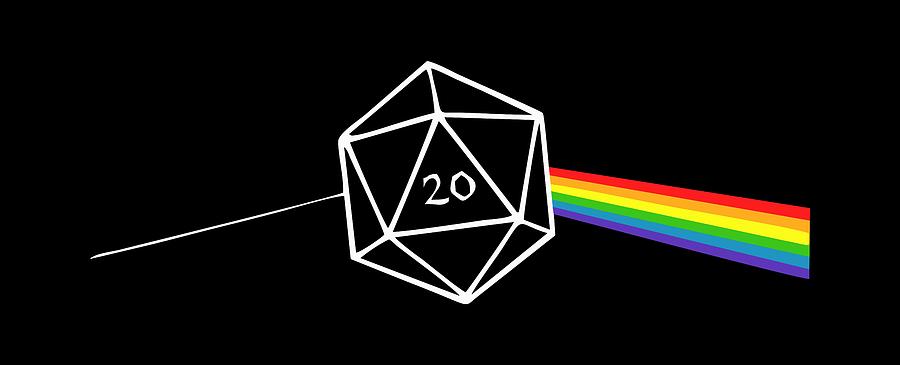Let's talk about zone based combat for a little bit. Zone combat is a theater-of-the-mind solution to spatial relationships in tabletop combat. The idea's been kicking around for some time, but more recently it has been used in some fairly big-name RPGs. One RPG that uses zone based combat is Star Trek Adventures.
The key thing to remember about zones, is that they have no set standardized dimensions. A zone is shaped more by the environment and its impact on the battlefield than by discrete numerical measures. For example, in an office building, each cubicle, office, and hallway might be distinct zones, even though they all have very different dimensions.
Let's take a look at how STA zoning of a scene affects combat. The image above is a general map of a hallway in a building. We're going to assume the doors to the side rooms are all locked, so we don't have to worry about them.
Example 1
In this example, we make the whole hallway 1 zone. What does this mean?
- Anyone can move to or from melee with the movement minor action. The movement minor action can also be used to completely exit this battlefield.
- Someone can whisper to a person on the other end of the hall and it will be heard just fine.
- All combat is in close range. That means, if someone drops prone to get better cover, attacks against them gain 2 bonus momentum.
- On a melee attack used to shove, a person can be removed from this battlefield.
- Area weapons could harm anyone in the zone on effects and complications rolled.
As you can see, this one seems a little... goofy. Especially with how sound works, and how lying down for better cover doesn't really work. Too few zones in a relatively large-ish area results in things just being a little wonky.
Example 2
In this version, we've split the hall into 2 zones, each representing opposite ends of the hallway. How does this affect combat?
- A person in one zone can use the move minor action to move to or from melee within their zone, or to move to the opposite end of the hall, or to leave the battlefield.
- People must shout to be heard at the other end of the hall.
- Ranged attacks from one end of the hall to the other are medium ranged. This means they nolonger gain bonus momentum when firing on a prone target
- If someone tries to hide behind the corner on the opposite end of the hall, the DC to spot them increases by 1.
- An area weapon fired to the opposite end of the hall poses no threat to anyone in the same zone as the shooter.
This one, to me, seems about perfect. You should have to raise your voice to be heard around the corner of a long-ish hallway. You can still move quickly in this relatively cramped area. Dropping prone is actually useful. But, just to be sure, let's take this one step farther.
Example 3

The final example has the hall broken down into 3 zones. One zone for each intersection, and a third one in the middle as a sort of no-man's-land. How have things changed?
- The movement minor action can only take you into no-man's land. To get to the other end of the hall, you'll need to spend momentum for extra steps, or use the sprint action losing your attack for this turn.
- People at one end of the hall cannot hear people at the other end, no matter how loud they scream. This means that if the players want to negotiate a peaceful result, they'll have to walk into no-man's-land and risk getting shot.
- Ranged attacks are now at long range, which surprisingly has no mechanical impact compared to medium range.
- Someone hiding at one end of the hall has +2 DC versus people trying to spot them from the opposite end.
- It is impossible to throw a grenade weapon to the opposite end of the hall.
OK, nope, that's not right. Suddenly, the atmosphere is molasses. Sound is muffled, movement is restricted, people are hard to see even though they aren't very far away. Too many zones in a small area warps reality too much.
Theorycrafting...
So, I did some research and discovered the average human voice can carry out to 180m in clear conditions. That's obviously a shout, since I can't even clearly hear my wife talking to me on the other side of the bedroom.
So, let's say that, based on voice range, "close range" would be anyone within 90m of the speaker. That means each zone should not have any dimension exceeding 90m in any direction.
Additionally, since the longest range for communication is 180m, it would be a wise bet to say that one should not set up zones such that more than 2 occupy a 180m length in any direction.
This is, of course, assuming you're building a battlefield in an empty field with no meaningful terrain variation.
On another point....
The throw range of grenade quality weapons is medium, or a 1 zone difference from point of origin. It isn't hard, with a bit of practice, to be able to throw a ball sized object about 50m, or even 100m if you really go hard at it.
So, in other words, going by the acoustic measurements above, you should probably be able to throw such a weapon somewhere into medium range, but definitely not beyond it.
So, uh... yeah. A zone should be about 90m across. There you have it.

















